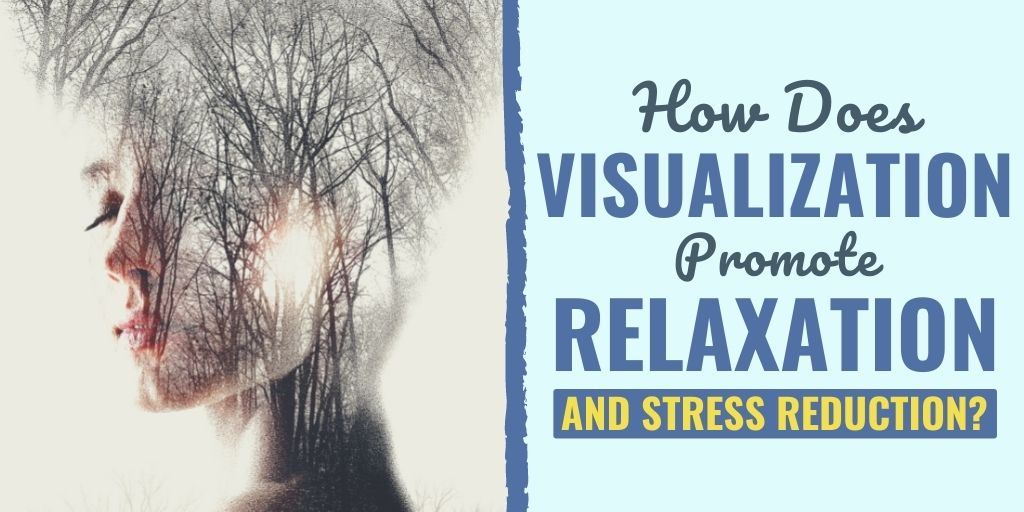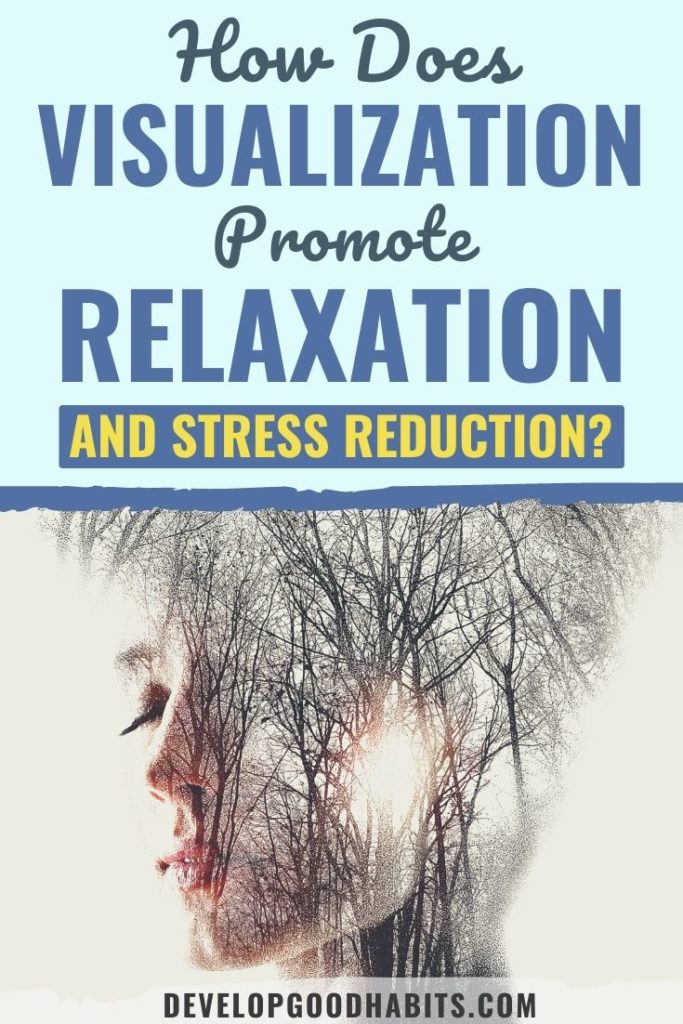Stress and anxiety have become a common part of our daily lives, and it’s no surprise that we are always on the lookout for ways to reduce them. One method that has gained popularity in recent times is visualization. Visualization is the technique of picturing a peaceful scene or situation in your mind, and it has proven to be effective in promoting relaxation and reducing stress. In this article, we will explore how visualization works and its benefits in promoting relaxation and stress reduction.
Visualization is a powerful tool that allows us to create a mental image of a peaceful or calming environment. It involves using all our senses to create a vivid picture in our minds. When we visualize, our brain responds as if we are experiencing the scene in real life. This response triggers the release of hormones that promote relaxation, such as dopamine and serotonin. As a result, visualization can help lower our heart rate, blood pressure, and muscle tension, promoting a sense of calmness and relaxation. In the next section, we will explore the benefits of visualization and its potential impact on stress reduction.

Visualization and Relaxation
Visualization is a powerful tool for relaxation and stress reduction. By using creative visualization techniques, the mind can create mental images that can help to reduce stress and tension, and promote relaxation. Visualization can also be used to create a sense of balance and harmony in the body and mind.
What is Visualization?
Visualization is a technique used to create mental images in the mind that can be used to create a sense of peace and relaxation. It involves focusing on an image, such as a landscape or a peaceful scene, and letting the mind wander and explore the image. Visualization can be used to create a sense of calm and balance, and can help to reduce stress and tension.
Visualization is often used in combination with other relaxation techniques, such as deep breathing and meditation, to create a feeling of relaxation and peace. Visualization can also be used to create a sense of balance in the body and mind. By focusing on the image and allowing the mind to explore and wander, it can help to create a sense of peace and relaxation.
How Does Visualization Promote Relaxation and Stress Reduction?
Visualization can help to promote relaxation and stress reduction by creating a sense of balance and harmony in the body and mind. When used in combination with other relaxation techniques, such as deep breathing and meditation, visualization can help to create a sense of peace and relaxation. By focusing on an image and allowing the mind to explore and wander, it can help to reduce stress and tension.
Visualization can also be used to create a sense of balance in the body and mind. By focusing on the image and allowing the mind to explore and wander, it can help to create a sense of peace and relaxation. Visualization can be used to create a sense of calm and balance, and can help to reduce stress and tension. Visualization can also be used to create a feeling of well-being, as well as to promote relaxation and stress reduction.
Frequently Asked Questions
Visualization, or guided imagery, is an effective relaxation technique that can help reduce stress and improve overall wellbeing. In this article, we answer some commonly asked questions about visualization and how it can help with relaxation and stress reduction.
What is Visualization?
Visualization is a relaxation technique that involves creating mental images in the mind. It is sometimes referred to as guided imagery or mental imagery. The technique involves focusing on a particular scene or image in the mind and allowing the person to become immersed in that image. Visualization helps to reduce stress and can be used as a tool to promote relaxation.
How Does Visualization Work?
Visualization works by allowing the person to become fully immersed in a calming image or scene. This can help to shift the focus away from stressful thoughts or feelings and allow the person to relax. The technique can help to reduce tension in the body and can help to reduce the body’s stress response. It can also help to reduce anxiety and promote feelings of wellbeing.
How Can Visualization be Practiced?
Visualization can be practiced anywhere and at any time. It is important to find a quiet, comfortable space where the person can focus on their visualization. It can be helpful to focus on a particular image or scene and to become fully immersed in that image. It can also be helpful to use guided imagery scripts or audio recordings to help the person focus on the visualization.
What are the Benefits of Using Visualization?
Visualization can offer a range of health and wellbeing benefits. It can help to reduce stress and can improve mood. It can also help to reduce symptoms of anxiety and can help to improve sleep quality. Regular practice of visualization can help to reduce feelings of worry and can help to promote feelings of relaxation and wellbeing.
Who Can Benefit from Visualization?
Visualization can benefit anyone who wants to reduce stress and improve relaxation. It is a safe and effective technique that can be used by anyone. It can be particularly helpful for those who are feeling overwhelmed, stressed or anxious. Visualization can also be used in combination with other relaxation techniques to further enhance the effects.

In conclusion, visualization is a powerful tool that can significantly promote relaxation and stress reduction. By engaging the mind’s eye and focusing on positive images, people can gain a sense of control and calm, allowing them to let go of stress and anxiety. Visualization can also help individuals to cultivate positive emotions and beliefs, which can further enhance their overall well-being and resilience.
Whether you are dealing with work-related stress, relationship problems, or health issues, visualization can be a valuable addition to your stress management toolkit. By practicing visualization regularly, you can train your mind to respond more positively to stress and adversity, enabling you to lead a more relaxed, fulfilling life. So why not give it a try today and see the benefits for yourself? With a little patience and practice, you may be surprised at just how effective visualization can be in promoting relaxation and stress reduction.



